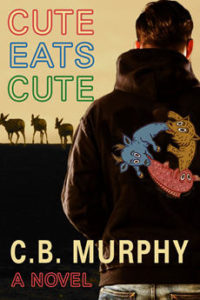C.B. Murphy's Blog, page 2
November 26, 2021
QR is Destiny
I had been painting on non-stretched canvas for some time before I started working on black backgrounds. I liked the black backgrounds but I wanted them more black. I tried vinyl paint. Didn’t work. I got the idea to paint on vinyl (commercial, in rolls) and experimented for while as to how it would take the painting style I was doing. This involved brush, but also applying paint and using a combination of spritzed water and air gun to move it in naturalistic ways.
The high gloss finish of the vinyl prevented the paint from settling as it would on the textured surface of canvas. My process is to accept and move on, see what happens next.
It was “easy” to paint by brush on vinyl, in some ways easier than textured canvas with “grabs” the paint into the crevasses as it moves along. But what was I do paint? My “fall back” (default) is to paint what I always paint when I doodle (as I have been doing for decades). This is roughly “roots and branches” intertwining, sometimes in game-like patterns and other times randomly. Another “fall back” position is to make proscenium arc curtains like one would see in an old-fashioned theater or movie house. Red velvet curtains tied with a rope. But not that. Just “roots and branches” in the shape of that which is almost identical to two trees (denuded of leaves with see-through soil to see the roots), one stand on each horizontal edge. This created an empty black space surrounded by (or presented by) the white-on-black vegetal “frame.”
May 31, 2018
Dogville and the Inverted Morality Play

One thing I like about Lars in this film is how he plays with our conditioned moral responses. Like we expect (why not?) the gangsters in their big black cars are bad. But we’re less obviously inclined to dislike police however we are suspicious of them that they are not taking into consideration the “humanity” of our on-the-lam protagonist Grace.
And of course the town being poor and humble we expect goodness to ooze from some if not all of them. Eventually and somewhat inevitably we see where this is going. Even her wannabe boyfriend Tom is manipulating her selfishly. She is a cipher, a ghost, we know little really about her. We know she has a past association with criminals but was she an innocent? Set up? We don’t know. But we are on her side and want to “give her a second chance” with the kind poor folks.
We see foreshadowed darkness though right away with the mean orchard farmer Chuck. Though he is the first to rape her, the child in her care was the first to betray her. So much for innocent children. Still we have hope they all can’t be bad, but the Grimm’s Fairy Tale aspect of the voice-over narrator reminds us that this is going in a pre-ordained and mythical direction that makes our liking (or disliking) the central character is some irrelevant.
Once the town turns her into a chattel slave it’s hard to see any redemption in store for them. And we agree with Grace that Tom’s last ditch effort to show the people their sins via confrontation with the slave-whore is not going to go well.
Perhaps the biggest surprise is that when the gangsters return she is not the gangster’s moll but an errant daughter of a somewhat sympathetic Big Man who acts mostly like a concerned parent, upset his child has called him arrogant. Surely a gangster has been called worse. The father-daughter discussion is perhaps the most “normal” conversation by modern standards in the whole film. The “fun part” if you will is how the father explains the metaphor of the dog (Dogville) that such (lowly) people need to be trained just like dogs need to be trained.
So in a sense the massacre and burning of the town is a moral act in the father’s world, like a feudal landowner who “has to” wipe out a rebellious village to show the rest of his vassals the proper way to act. Which would be what? We aren’t sure. It seems the town is in a lose-lose situation. Perhaps if they had turned her in immediately (but not to the cops) they would have been spared his wrath. Maybe. But then we’d have no story. Girl good, town bad, gangster bad.
The way it endows have an “upper class” (albeit gangster) gal joining the “family business” which is modeled after a feudal kingdom where the peasants have no rights (and no weapons).

Ah, the Young Americans Bowie song ending with a montage of classic poverty (mainly white at least at first) intermixed with contemporary homeless (mostly but not exclusively black) throws out many confusing signals. It seems like it might be about race but then race didn’t feature in the film, so why bring up a new “topic” in the closing credits? Usually we see the famous Walker Evans Depression photographs as evidence of the horror of the Great Depression. And often there is a moralizing about how “the system” (capitalism, the government, etc.) failed the common man.
But here we have to associate the fact of the poor with the negative experience of the nasty folks from Dogville. Would these poor people obviously quite desperate react to Grace like the “good people of Dogville”? Is so, we are invited to see them not as good people victims but (like the gangster’s dog analogy) “desperate people who would do desperate things.” It is a rebuke of the common theme that poverty is ennobling (or at least neutral) and the real villains are the rich.
Not many rich show up in the montage with the exception of President Nixon. I checked Bowie’s lyrics, which are unusually mild about this easy villain. All he’s asking is if we (the young Americans) remember “your President Nixon.” And do we remember the “bills you have to pay”? Throw in do we even remember yesterday?
There is another shocking line in the song (more shocking today perhaps than the 80s): “Ain’t there a woman I can sock on the jaw?” Though it may not be Bowie talking but a fictional brute persona it’s a similar question to the one asked by Lars in the film. What is kindness really? Is self interest wrong? Is anything ennobling (certainly not town meetings in churches)?
In the end we have to admire the power of the gangsters, their hierarchical order, their gorgeous cars, clothes and guns. They are the Mongols, the Huns, the robber barons, but the play a role in preventing everything from being Dogville. They have accumulated wealth and power. They know something Dogvillians don’t. Is there another pun: it’s a dog-eat-dog world? No one is good, everyone just plays our their roles? We are uncomfortably forced to admire their Germanic efficiency in wiping out the town and even using it as a way to teach the young warlord, the next Commandate — Grace— how to “do what you need to do yourself.” That is shoot the lousy wannabe boyfriend wannabe intellectual in the head.
October 24, 2017
Demons of Creativity: Sitting Down
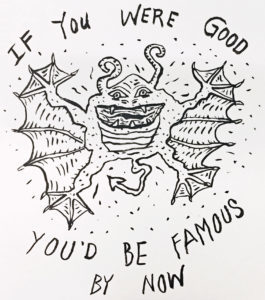
The toughest thing about sitting down and saying “I’m going to be creative” is entering the proper mind-space. Is there a better word than mind-space? Maybe. But I think it’s more than attitude.
I work on the premise that we have inside of us a multitude of competing voices or personalities. I have gotten used to calling them my “board of directors” though a friend who dislikes the corporate feel of that, suggested “characters.”
I don’t know why we have “demons of creativity.” Perhaps they once served some evolutionary function by preventing the tribe from perishing from outlandish schemes. Like listening to the guy who says, “Hey, I think there’s a giant turtle in the middle of the ocean full of fruit and fish, let’s take the whole village out there and try to find it.”

Perhaps what I am calling the demons of creativity are left over from the practical need to relegate these kinds of ideas to “entertainment,” telling stories around the campfire. The birth of the shaman.
The character I call forth when I am sitting down to “be creative” has to be properly braced against “demonic attacks.” Picture a warrior in a video game standing alone on a hill while a fire-breathing dragon flies toward him.
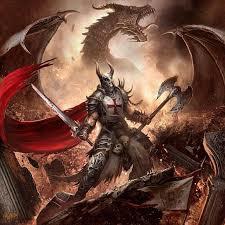
May 25, 2017
What world is this? And why do we care? HBO The Leftovers
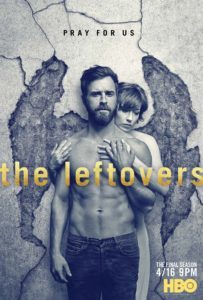
What world is this? Well on HBO’s The Leftovers this is THE question of the show. The premise that 2% of the world’s population mysteriously disappear IS the plot. The whole show is a metaphor for our world (aren’t they all?) but instead of mysterious disappearances we “merely” have to deal with the Great Paradox of Death. That is — if there is God etc. and/or a plan for the Universe why would it create these great critters (us) only to let them pass on to compost after so many useful years. It’s counterintuitive to our egos. So in The Leftovers we are seeing a world dealing with the issue of death (as we are) but on top of it they have the Great Mystery that these disappearances occurred in a fashion most closely described in the Christian Rapture but lacking the “logic” that the “good people” would go up and the not-so-good left behind. The Left Behinds i.e. the Leftovers. On top of that the creators of this world have teased us with Felliniesque visions of “other worlds” that may or may not be true where some special people (or very ordinary people — Kevin the Sheriff) get to visit the “other world” that may or may not be the world after death and may or may not be the same “place” that the 2% went.
Not everyone has the patience for all this suspension of belief/disbelief but the key to the show working is that the creators get us to love the characters and care about their decisions. Why is Kevin chosen for special experiences? Why does Laurie go into a cult? What’s going on with tough-as-nails Nora and why does she give away the baby that was mysteriously given to her to love? What convinces tough-as-nails John to become a fake psychic to help people? Why does he think it even helps people? These are people questions not “world” questions per se. And it’s why we watch.
April 15, 2017
Movie Review: Elle
[Spoiler alert. All my reviews have spoilers.]
There are reasons why we like actors who we can “read” what’s going on with them from their expressions, but Isabelle Huppert is the opposite. Isabelle Huppert is a fearless and inscrutable actress. Though her face is always expressive we have no idea what’s going on in her head. Paul Verhoeven not only takes advantage of this but it is central to the enigma of her character Michele Leblanc in “Elle.”

I know Elle is controversial, so I deliberately avoiding reading about the controversy (or other reviews) until I could see it for myself. I have been a fan of Ms. Huppert’s since I saw “Piano Teacher” in 2001. I can’t tell you how many times I’ve recommended that movie only to second guess myself and wonder if they could take it. I would be careful to recommend “Elle” as it deals this sexual violence against women in a way that is contrary to dominant paradigms of discussing this topic.
The gist of the film is that Michele is brutally raped and though traumatized, she seemingly goes about her life with the somewhat casual addition of buying pepper spray, an attack axe, and taking shooting lessons. So you get the impression this is going to be a film about a “strong woman fighting back.” While it is partly about that it is also much more complex and enigmatic. We discover (partly to our horror) that Michele has a kinky erotic side of her that was “activated” in a some kind of S&M-ish way by the attack. Only a fearless director like Verhoeven (why do European directors seem to corner the market on bold?) would dare take this on.
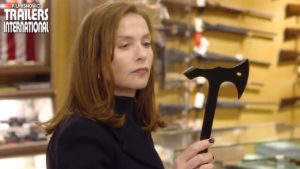
We have early evidence Michele she has exotic sexual tastes. She casually has been having an affair with her best friend’s husband. As the boss of her computer gaming company, she has a very strange way of dealing with an incident of sexual harassment. It’s inverted — a male subordinate harasses her indirectly. She humiliates the male culprit by making him expose himself to her and seems to “forgive” him because —why?— he has an “attractive penis.” Whoa. We’re not only not in Kansas, we’re certainly not in the continental USA where not even a strange woman would deal with harassment with kinky counter-harassing humiliation.
I think what’s interesting about the film is connected to its controversy. While at least the West is trying to be more aware of the issue of violence to women there is a tendency to simplify issues in an attempt to clarify the underlying causes. It is complicated by women who seem loyal to their abusers. We tend to think of them as lesser or deranged, not empowered attractive CEOs like Michele.
As a result the once-common Hollywood motif of “No! No!… Yes!” can no longer be used as an erotic come-on. No means no, unless something is wrong with you. Well, something is wrong with Michele but we never know what it is and by the end we’re still wondering. Huppert’s character insists on the unfashionable freedom to choose what she wants to do to punish a sexual offender. And we are never sure what she’s going to do— kill him or re-enact the abuse one more time. And then maybe kill him.
March 8, 2017
Fortitude – snow and ice and crazy
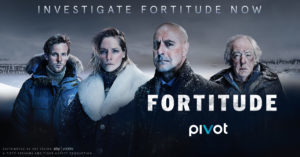
I like to watch Scandinavian films and TV in the Minnesota winter. It gives me a sense of shared suffering with another part of the world. Amazing how much is out there given the populations of some of these countries (especially Norway and Iceland) are small by US standards. My taste skews to the “snow noir.”
Fortitude is an unusual one, created by the BBC to ride the Scandinavian Noir bandwagon so I wasn’t sure it would be as good as some of the others like Occupied. With Stanley Tucci in the poster (Stanley Tucci?) it also felt like they were seeding it with some well known American actors (Dennis Quaid is in the second season) to give Americans a “friendly face” (like Raymond Burr in Godzilla).
It started slow, too, so I almost gave up on it. But now I’m seriously into it. It seems to be learning to go more “over the top” (in a good way) as it goes along. Diseases from unthawing mammoths, shamanic murders, suicide, love triangles … all in the tight space of an island community in the Arctic circle with apparently only one bar and one hotel so you never lose track of anyone fro very long.
Also, because it’s BBC it’s in English which at first I thought was also a negative in the sense of less authentic. But now I don’t care I just want to see what happens next.
January 15, 2017
AUTOPSY OF JANE DOE REVIEW
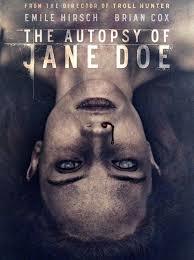
A little out of practice on blogging. Had to rediscover a reason to do it. Sort of tired of blowing my own horn and self-promotion. My son suggested I use it for snippets of fiction (flash, short story or parts of novels) but all that strikes me at the moment as a bit too self promotional. So the reason to do it is for fun. And what would be fun for me is writing about movies and TV. I watch a lot.
And for the record since this is self-entertainment, I’m going to put “spoiler alerts” more or less in every review because it’s not a “normal” review that carefully walks around too much revelation. It’s my review.
Here’s my review of The Autopsy of Jane Doe
One of my sons told me about it and said it was “almost” too scary for him to watch. So this was a challenge. I’m that guy that thinks he “can’t be scared” though when my kids were young (and still some of this lingers) I don’t like watching films where young children are hurt or kidnapped. Don’t mind teenagers. Most (in the movies) deserve it. Just kidding.
The big spoiler of this film is that it could have been so much better! The simple and spooky setup of a father/son autopsy business (do they even have these?) in an old basement of an old house is pretty good. When I saw Brian Cox in it, I thought whoa he’s been in Bourne Identities. He’s no slouch. And for the “kids” Emile Hirsch who I vaguely remembered from somewhere maybe something to do with college kids running from a serial killer? No. IMDB tells me he was in Into The Wild where he got to play the clueless kid who gets himself killed by being too naive about nature. Sometimes a scary movie is better with unknowns (see: It Follows) but these two told me if I was going to be stuck in an autopsy lab (warning: was this a play? no! thank god) it might as well be with two decent actors. Well, one proven, one pretty boy.
They find a body and have to do their thing. It’s late. It’s raining. Spooky things start happening right away which I won’t go into, but pretty soon the actors catch up to the audience in thinking this is a dangerous situation and maybe they need help.
What’s close to genius about the film is the mixing of “body horror” like the infectious blood of an alien (The Thing) with cult-sign and eventually witches. I think it would have been a better film if they hadn’t wandered into the only “too much talking” section where the father tries to explain the history of witches (liberal version: innocent herbalists etc). Ah, but he’s wrong. Whether or not they were once innocent herbalists (see: patriarchal crushing of smart women) this particular “witch body” (she never even has a name hence the title) has twisted into a real mean bitch. Even when the dad tries to “make a deal” with the corpse (The Exorcist style — “take me!”) she reneges on the deal mainly to keep on killing.
Is she killing men in particular? Morticians? Autopsy professionals? Or just anyone? Do we care? Not really. There was a reference I didn’t “get” to how the wife/mother had died and whether it had something to do with why they “deserved” the witch’s revenge. I was formulating what it could be and then it seemed irrelevant and would require me to re-watch it to “get it” so maybe you will or did.
There are a few spooky (if somewhat predictable motifs) that are effective. But in the end, no it wasn’t that scary to “the man who can’t be scared by a movie” (other than “Death on the Highway” which they used to show in drivers’ training to scare you into not wanting to drive.) But that was a long long time ago.
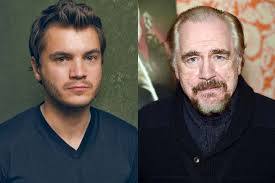
August 5, 2016
Nature vs “Nature”
There have been a lot of stories lately with the theme of “cute eats cute” and variations on it. Although I don’t think the alligator attacking a child at Disneyworld qualifies, there were people who were upset that in the search for the child they were killing alligators and cutting them open to look for evidence. Yeah, pretty gruesome I admit.
Less gruesomely, I came across some stories about bird watchers (who you normally think of as pretty “nice” people) being upset when they witness the cruelty of nature up close. One is a New York Times story about someone trying to help bluebirds nest on his property
smartURL.it/CECtg
[image error]
May 29, 2016
Cute Eats Cute: variation Ugly Eats Us
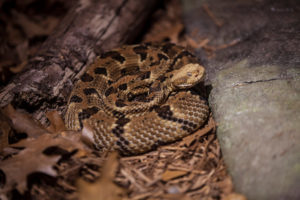
It’s surprising how often themes from my novel CUTE EATS CUTE arise in the news. This current story is about an ecologist’s efforts in Massachusetts to save an endangered species of northern venomous rattlesnake. Hardly “cute eats cute,” right?
Wrong.
This issue isn’t that people think a rattlesnake is charismatic fauna, but that it is endangered. Granted many humans have fear of snakes, especially poisonous ones and aren’t too eager to sign on to giving them their own island which is the plan. How this relates to the issue in my novel (too many deer in an urban park) is that it pits one’s prejudices (vis a vis the animal kingdom) against one’s stated beliefs (that any endangered species deserves “equal treatment” before the law). Even ugly ones. Even poisonous ones.
You also have factions and fear-mongering. People are sending out videos of swimming snakes and implying that there is no such thing as a protected island, that these critters (it only takes one pair) could swim to your town and reproduce. Hence you’d get an urban version of Snakes of Plane.
If there is anything to enjoy about the controversy it’s how complicated it is for us (an animal species) to rise above the animal kingdom (angelic humans) and treat them fairly. We can’t exactly treat them fairly because in this case we might be harmed or killed by them just doing what they do. In Africa and other places where predators big enough to prey on humans live, the issue is essentially the same. Still, it’s easier to make a case (to the Westerner anyway) that a majestic lion has a right to exist even if he occasionally wanders into a village and kills a human. Thus you have the ongoing fight (also reminiscent of parts of my novel) that pits hunters against hate-hunting people. Remember the outrage people had over the Minnesota dentist who killed Cecil the Lion?
May 18, 2016
Cute Eats Cute: in action!

My novel CUTE EATS CUTE is about the realization (through the eyes of a 15 year old protagonist, Sam) that no matter what philosophy you advocate, Nature still runs a pretty tough game plan.
So there I was at my favorite coffee shop in Stillwater, Minnesota, watching a cute family of baby Canada geese waddle through the parking lot. I watched them, wondering how they were going to cross the street and where they were going.
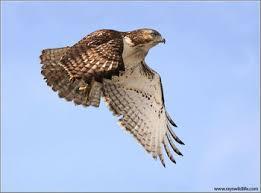

out of nowhere a red tailed hawk appeared and swooped down and grabbed a baby. The two parents watched for longer than I thought they might, honking.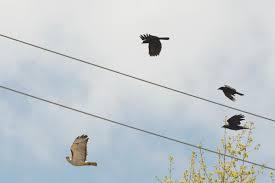
Immediately three crows took after the hawk. They forced the hawk to land in an industrial pond area where I assume he ate the baby goose.

I excitedly told the two counter girls at Dunn Brothers Coffee what I had just seen but half way through my story I realized they were hoping for an heroic ending, a happy ending, a Disney ending and all I had to offer them was a Cute Eats Cute ending.

